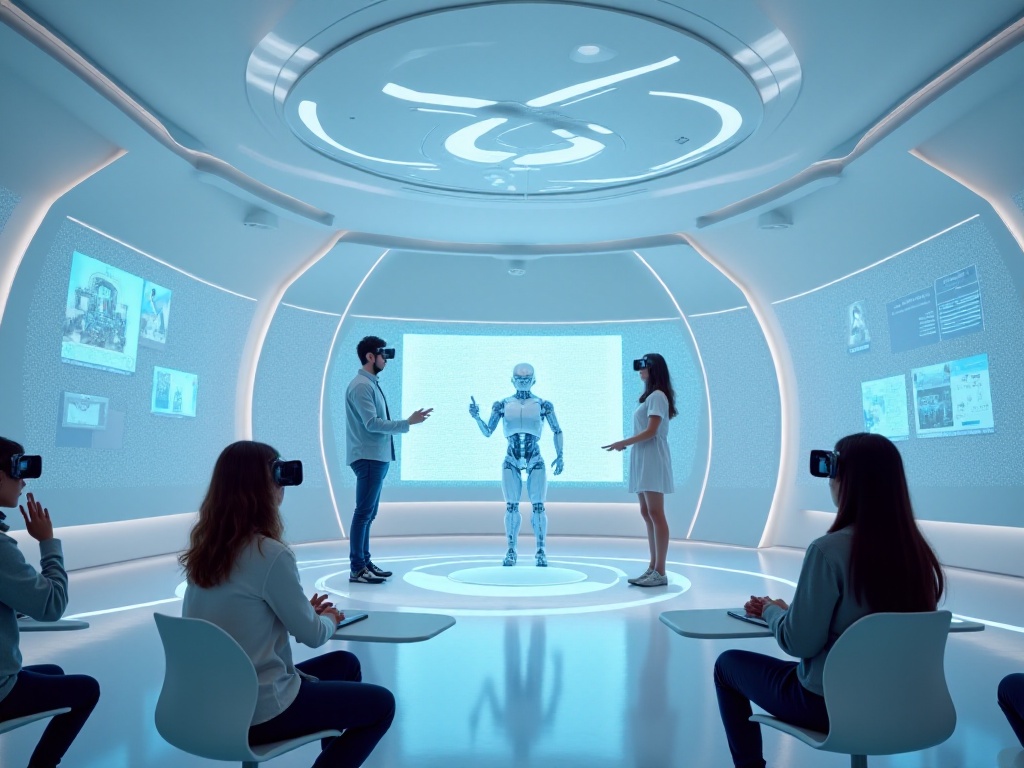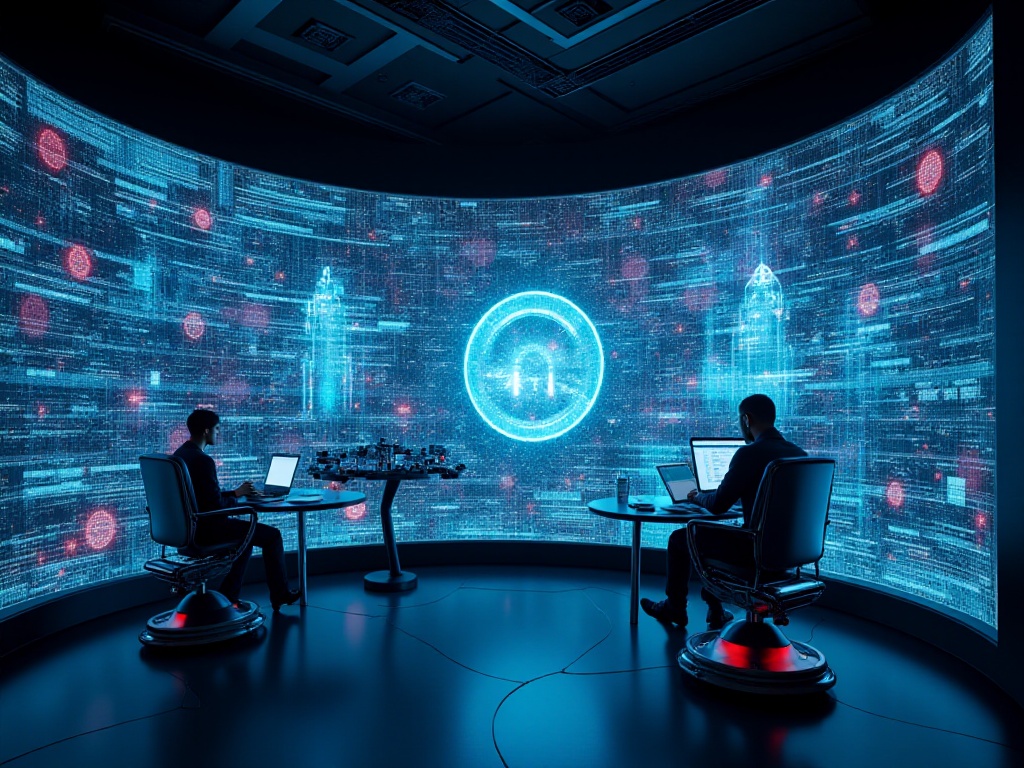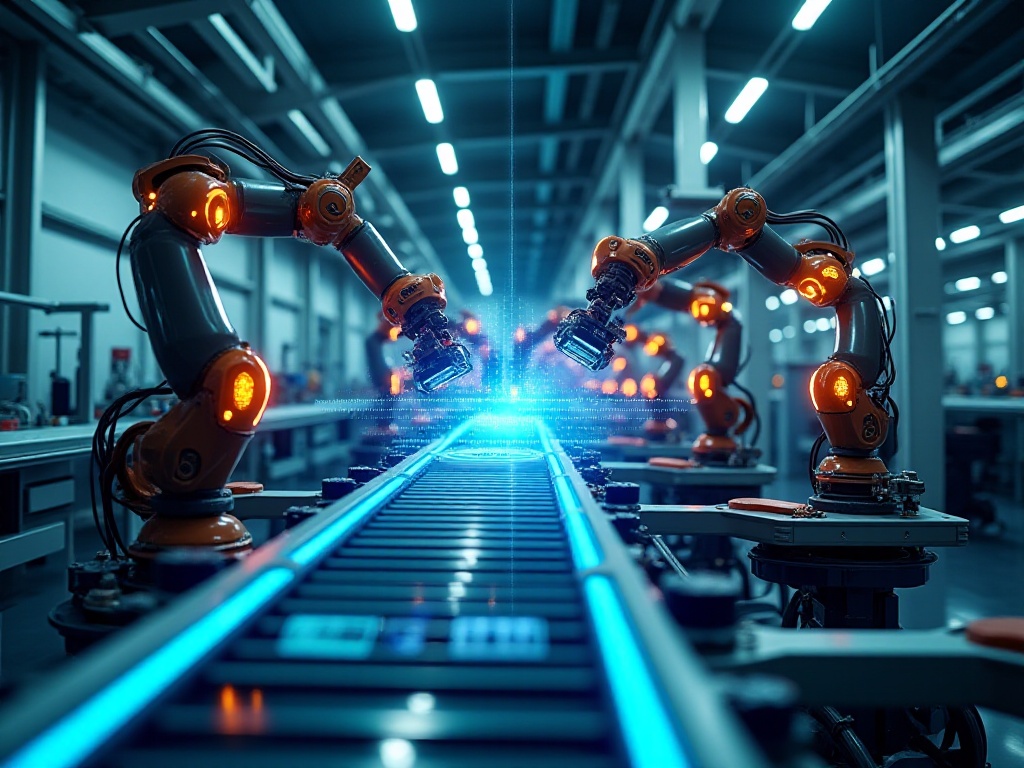Opening Thoughts
As a post-90s educator, I deeply feel how artificial intelligence is reshaping the entire education field. I remember when I first started teaching, spending enormous amounts of time preparing lessons, grading assignments, and managing classroom order. These tedious tasks occupied most of my energy. Back then, I often had to stay up late grading homework and spend weekends organizing lesson plans and student files. Looking back, that period was indeed quite difficult, but having gone through that phase makes me appreciate more deeply the convenience brought by intelligent teaching systems today.
The emergence of intelligent teaching systems is like a silent revolution in education, quietly changing traditional teaching models. When I first started using intelligent teaching systems, I felt somewhat uncomfortable, always thinking these cold programs might affect emotional communication between teachers and students. But as I used them more, I gradually discovered that these systems not only didn't hinder teacher-student interaction but actually gave me more time to focus on students' individual needs and emotional development.
Personalized Teaching
Speaking of personalized teaching, we must mention the "one-size-fits-all" teaching approach in traditional classrooms. I remember standing at the podium, facing forty-plus knowledge-hungry faces, yet only being able to teach at a uniform pace and difficulty level. Some students found the course too difficult and couldn't keep up; others found it too simple and lost interest. This situation particularly troubled me, always feeling like I was letting students down.
Now, with the help of intelligent teaching systems, this dilemma has been well resolved. Take the Carnegie Learning system we use at our school - it's like an experienced teaching assistant that can precisely grasp each student's learning characteristics and progress. The system automatically adjusts the difficulty and pace of teaching content by analyzing students' response data.
For example, in my math class, the system adjusts problem difficulty in real-time based on students' answers. Because Xiao Ming shows excellence in algebraic operations, the system automatically pushes more challenging problems for him, such as complex polynomial operations or application problems requiring multiple knowledge points. This not only satisfies his thirst for knowledge but further enhances his mathematical thinking abilities.
For Xiao Hong, who struggles with geometry, the system provides more basic practice problems with detailed solution steps and concept explanations. Whenever she solves a problem, the system gives encouraging feedback, and this timely positive reinforcement greatly boosts her learning confidence.
After using the intelligent teaching system, I clearly notice increased student learning enthusiasm. Because everyone can progress at their own pace, they don't lose motivation from falling behind or finding things too simple. This personalized learning experience reminds me of the sophons in the science fiction novel "The Three-Body Problem" - although our technology hasn't reached that magical level yet, we can indeed achieve teaching according to individual abilities to a considerable degree.

Real-time Feedback
The biggest change brought by intelligent teaching systems has to be the real-time feedback mechanism. I remember when I first became a teacher, grading homework was an endurance battle. Every night, I had to spend several hours grading assignments, sometimes until my eyes were blurry, and there would still inevitably be oversights in class the next day. More importantly, when students could only see the corrections the next day, their impression of the problems might have already become fuzzy, naturally diminishing the feedback's effectiveness.
Now with AI assistants, this situation has fundamentally changed. The Nearpod platform we use at our school is like giving each student a personal tutor, able to provide instant guidance during problem-solving. For example, when solving math problems, the system not only immediately points out errors but can also identify students' thinking blind spots by analyzing their solution process.
Just the other day, when my student Xiao Zhang was working on quadratic function problems, the system discovered he consistently overlooked negative number cases. In a traditional classroom, this problem might not have been discovered until an exam. But with the help of the intelligent system, the issue was identified and corrected immediately. The system gave targeted hints and pushed problems specifically practicing negative number cases. This instant guidance not only helped Xiao Zhang quickly correct his mistakes but also gave him a more comprehensive understanding of quadratic functions.
The real-time feedback system also helps me better grasp the learning dynamics of the entire class. Through system-generated data analysis reports, I can clearly see each student's mastery level of various knowledge points, which content needs emphasis, and which students need extra tutoring. This data support makes my teaching more targeted and efficient.

Teaching Management
Speaking of efficiency, we must mention the revolutionary changes intelligent systems have brought to teaching management. As a teacher, besides teaching itself, there's a lot of administrative work to handle, like writing lesson plans, organizing student files, creating presentations, and calculating grades. While important, these tasks indeed took up too much time that should have been spent on lesson preparation and teaching.
Last year, I started using TeachMateAI to handle daily teaching management work, a decision that completely changed my work style. Take lesson plan writing for example - previously I needed at least two hours to complete a lesson plan, but now with the AI system, I can generate a basic version in 15 minutes and just make some adjustments based on actual circumstances. This saves at least 5 hours every week.
Not just lesson plan writing, but intelligent systems have also played a huge role in grade statistics and student file management. The system can automatically record each student's homework and test scores, generate personalized growth reports, and even predict potential learning issues. These features help me better understand each student's learning situation and identify and solve problems promptly.
Data shows that teachers using intelligent teaching management systems save an average of 30% of administrative work time. I use most of this freed-up time to design more creative teaching activities or have one-on-one conversations with students. For instance, I now set aside time each week to chat with students, understanding their learning confusion and life situations. This deep communication helps me better understand students' needs and makes teaching more personal.

Teaching Resources
The changes brought by intelligent systems in accessing and using teaching resources are equally amazing. Remember the scene when preparing lessons before? Searching for various materials online, then spending a long time filtering and organizing, then making them into presentations. Sometimes you couldn't find suitable teaching materials even after a long search and had to create everything from scratch.
Now with AI tools like Curipod, lesson preparation has become much easier. This system is like an all-capable resource manager that can automatically search for and integrate various teaching resources based on teaching objectives. Most amazingly, it can recommend the most suitable teaching materials based on students' interests and learning styles.
Take the world history course I recently taught - the system automatically generated a series of beautiful timeline animations, presenting important historical events in a vivid way. Moreover, the system designed various interactive tests and mini-games based on the teaching content, making originally dry historical knowledge interesting.
These AI-generated teaching resources are indeed effective - statistics show that after using AI-assisted generated teaching resources, students' knowledge retention rate increased by an average of 25%. Behind this data is students' higher learning interest and better learning outcomes.
However, I think the greatest value of intelligent systems isn't just in generating quality teaching resources, but in helping teachers create more targeted teaching content. The system analyzes students' learning data, understands their acceptance of different types of resources, and then recommends the most suitable teaching methods accordingly. This data-based personalized teaching resource recommendation makes teaching more scientific and efficient.

Future Outlook
Looking at these amazing changes, I often think about the future of education. Perhaps in the near future, every student will have their own personal AI learning assistant that can accompany learning around the clock and provide professional learning guidance. It will not only understand students' learning characteristics but also adjust learning pace based on their emotional state, truly achieving intelligent personalized education.
In such a future, teachers' roles might change significantly. We may no longer need to spend much time on knowledge transmission, but can focus more energy on cultivating students' innovative thinking, critical thinking abilities, and emotional education. After all, these are areas that AI currently cannot fully replace.
However, while we celebrate these technological advances, we also need to consider some potential issues. For instance, will over-reliance on intelligent systems affect students' independent thinking abilities? How do we maintain human care in intelligent education? How do we ensure technology doesn't increase inequality in educational resource distribution? These are questions we need to seriously consider.
I always believe that education's essence is cultivating people, not machines. Intelligent systems should be powerful assistants to education, not its dominators. What we need to do is maintain education's core values while enjoying the convenience brought by technology.
Let's look forward to an educational future where technology and humanities perfectly integrate, where every child can receive the most suitable education, every teacher can better exercise their educational abilities, and everyone can realize their educational dreams.
This is an era full of possibilities, and we are witnessing and participating in this educational transformation. What will future education look like? The answer to this question perhaps lies in each of our thoughts and practices.







